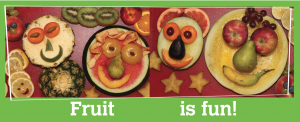April Pulley Sayre's Blog, page 8
April 29, 2012
Stars Beneath Your Bed and Science Standards
Stars Beneath Your Bed: The Surprising Story of Dust is a natural for fulfilling the new science standards. That’s one of the things I learned when I attended NSTA and spoke on a panel of authors organized by Carrie Launius and hosted by Wendy Saul. Each of the educators at the conference gave activities to go with various books. Carrie worked with teacher to get them to consider how the book deals with cross-cutting concepts:
Patterns
Cause and Effect: Mechanism and Explanation
Scale, Proportion, and Quantity
Systems and System Models
Energy and Matter: Flows, Cycles, and Conservation
Structure and Function
Stability and Change
I can’t speak to all the teachers’ comments on how the book fits in. But here are some of the ways that popped into my mind, as I learned of these cross-cutting concepts.
Patterns. (Questions about relationships and the factors that influence them certainly applies to SBYB.)
Cause and Effect (Dust and sunsets…all the things that create dust…waves that splash salt, and so on. Lots of way to go with this one!)
Scale (Going from the scale of dust to the scale of sunsets certainly gets kids thinking about that. Dust being pieces of so many things mentioned in the book certainly works here.)
System and Models (I’m a tad fuzzy on how this applies but I’m sure an experienced teacher would have some ideas. I get the systems but not the models)
Energy/Matter/Flows/Cycles/Conservation (SBYB certainly goes for this one. Even conservation if you consider the lines about dust from long ago still being around.)
Structure and function ( I don’t think this is a major one illustrated by SBYB. Other books probably do this beter.)
Stability and change (Although no rates of change are mentioned, certainly the cycles of dust/sunsets/and change are well illustrated by the book.)
This older title of mine has just been reprinted, along with Dig, Wait, Listen: a Desert Toad’s Tale. So it looks like these will be around for a while. Stars Beneath Your Bed seems to be growing in popularity, year-by-year.
April 28, 2012
Cherimoya
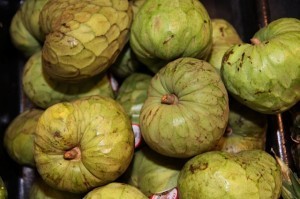 Jeff and I were first introduced to this fruit on a long guided bus ride through Ecuador. The driver stopped by a fruit stand, bought some cherimoya, cut it up and offered it to all the passengers. The flesh was white, creamy, sweet, and delicious. It was somewhere between a pudding and a banana in texture. I don’t know how good cherimoyas that arrive here in the states are. But they would be worth a try.
Jeff and I were first introduced to this fruit on a long guided bus ride through Ecuador. The driver stopped by a fruit stand, bought some cherimoya, cut it up and offered it to all the passengers. The flesh was white, creamy, sweet, and delicious. It was somewhere between a pudding and a banana in texture. I don’t know how good cherimoyas that arrive here in the states are. But they would be worth a try.
Their closest relatives in the U.S. are our native Paw Paw fruit. Both have creamy flesh. Here’s a little info about the fruit from the cherimoya page provided by rare fruit growers of California.
I have heard this fruit’s name pronounced both CHEER-i-moy-a and also CHER-i-moy-a.
New Bumblebee Publication
Kids and educators intrigued by my book The Bumblebee Queen, there’s finally a truly great publication I can send you to for follow up. This has been on my wish-some-expert-would-write-this dream list for years. Hooray for USDA and all the authors involved! Fisheries biologist John Magee in NH, thanks for giving me the heads up on it.
The publication is a free, downloadable pdf, you can store it on your computer, ipad, iphone, whatever.
http://www.fs.fed.us/wildflowers/pollinators/documents/BumbleBeeGuide2011.pdf
April 26, 2012
Vegetable Art, Trout Trees and More!
I had the pleasure of visiting Pioneer Elementary in March. Wow, the art teacher was a burst of creativity, working on such incredible projects with the kids. Many other teachers were doing amazing work, as well. See some of it below! Click on each photo to see it in greater detail.
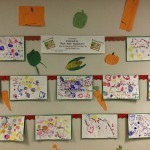
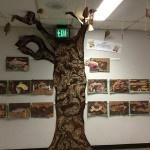
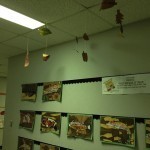


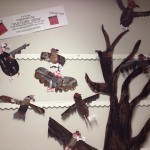

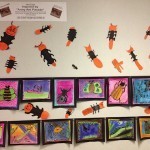

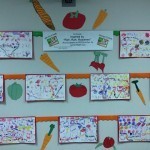
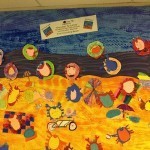

Durian Fruit: The Smelly Prize
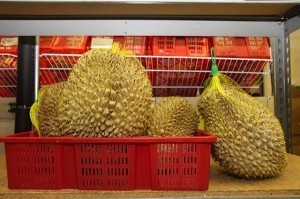 Durian, oh prickly one. Here’s a photo of the durian that the kind folks at Saigon Market allowed me to create in the back of their store. When I created this photo, it was in a stanza that involved crates. So I did a lot of durian hefting and rearranging. Yet we changed the stanza and ended up using a much earlier photo I took when I first saw durian in their store, side-by-side with persimmons.
Durian, oh prickly one. Here’s a photo of the durian that the kind folks at Saigon Market allowed me to create in the back of their store. When I created this photo, it was in a stanza that involved crates. So I did a lot of durian hefting and rearranging. Yet we changed the stanza and ended up using a much earlier photo I took when I first saw durian in their store, side-by-side with persimmons.
The durian in the photo have been kept cool, even frosty, so they don’t have the characteristic durian stink. They are heavy, bigger than footballs, and tough on the hands if you handle them without the netting.
These fruit have the same kind of reputation as limburger cheese. The fruit is so stinky that there are signs on some trains in southeast Asia banning people from carrying durian onboard! My friends Candace and George bought one. Okay, so they kept it in their cool garage for several days. They’d go out, now and then, scoop out some fruit and eat it. They said it was delicious. But the thing was too stinky to have in their kitchen. My friends Andrea and Donnie who bought durian cookies, opened the package, and the smell that wafted out was so intense that they ran and threw the package outside their door.
Candace said she’d be happy to buy a durian fruit to bring to a launch party for Go, Go, Grapes: a Fruit Chant which comes out on May 22nd. I, on the other hand, would actually like some people to stay at the party so I’m vetoing the idea. Of course, we could put it out on the porch, I suppose…
April 25, 2012
The Huckleberry Confusion
The Huckleberry Confusion—is it a novel? No. It’s just that huckleberry is a slippery word. It refers to various berries of the Vaccinium genus. (Blueberries are also in the Vaccinium genus.) In the western U.S., folks call some wild blueberries “huckleberries.” There are cultivated huckleberries, which are a deep blue and taste a bit less sweet than regular blueberries. (Note that the sign in the picture says they are for cooking.) Some berries called “huckleberries” are red in color. Huckleberry is a common and confusing name—for sure. These may mostly be the same genus, but they are different species.
In between signings at American Library Association in 2011 I was thrilled to find huckleberries at a the Crescent City Farmer’s Market in New Orleans. Unfortunately, because of the rhyme they were in, I had to package them up to take home and combine with the other fruit in a photo for that page. Alas, with all the ALA festivities, I left those huckleberries in the hotel fridge and huckleberries aren’t available here at my market, so they did not make it into Go, Go, Grapes: a Fruit Chant. Sorry, huckleberry fans. Here’s my quick snaps of huckleberries in the New Orleans market. 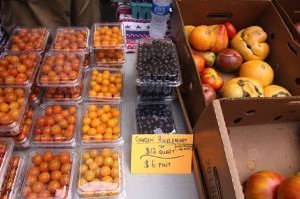

April 23, 2012
Go, Go, Grapes: a Fruit Chant
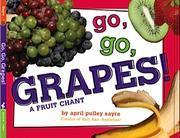
Rah, rah, raspberries! Go, go, grapes! Prepare yourselves. Go, Go, Grapes: a Fruit Chant will be released May 22, 2012. I’m proud of the luscious photos, which were taken primarily at our local farmer’s market, small grocery stores in our town, and a few markets I visited on travels. Several fruit parties had to be held to munch all the fruit I purchased from friendly fruit folk!
Learning Fruits and French
Last summer we visited the Jean-Talon Market in Montréal. Don’t go too early, as we did, because most of the farmers arrive a bit later than our farmers here in the Midwest. But wow, the displays are amazing.
Next to the boxes of lychees, were Cape gooseberries, which come in husks like tomatillos. It is related to the tomatillo and tomato.
Here’s the wikipedia on this fruit.
http://en.wikipedia.org/wiki/Physalis
Also, enjoy a few more photos from the market:
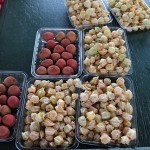
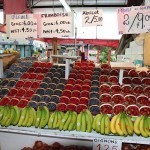

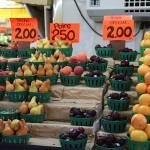
What’s Hiding in Go, Go, Grapes: a Fruit Chant
Try hunting for these vegetables, words, and objects that appear in the photos with fruit.
A red checkered tablecloth
A molcajete, a large stone version of a mortar and pestle. I bought this one at El Paraiso, a small grocery featuring items for Mexican recipes. I also bought the guavas there.
Cactus pads, which are not the fruits, but leaves, of a cactus plant
Hanging scale
The Spanish word “piña” which means pineapple.
A half bushel of corn
Yellow tomatoes and green tomatoes
Two honeydew melons
Roma tomatoes
The word “Niagara”
Really hard to find:
At least 40 onions
A half bushel of tomatoes
Jalapeño peppers
April 7, 2012
Fruit and Go Seek
Here's a list of fruits and fruit parts in the last spread of Go, Go, Grapes: a Fruit Chant (Release date: May 22, 2012) Find them in the book if you can!
apples (whole)
apple slice
apple peel
apricots
apricot pits
banana
blueberries
cantaloupe slice
fig (dark)
fig (light)
grapefruit
grapes (green)
grapes (red)
kiwi slices
lemons
lime slices
mango slice
nectarine end
orange slices
orange peel
papaya seeds
peaches (donut variety)
pineapple leaf
pineapple end
pineapple cross section, midway
plum ends
raisins
starfruit slices
yellow watermelon section
red watermeleon sections
April Pulley Sayre's Blog
- April Pulley Sayre's profile
- 105 followers


